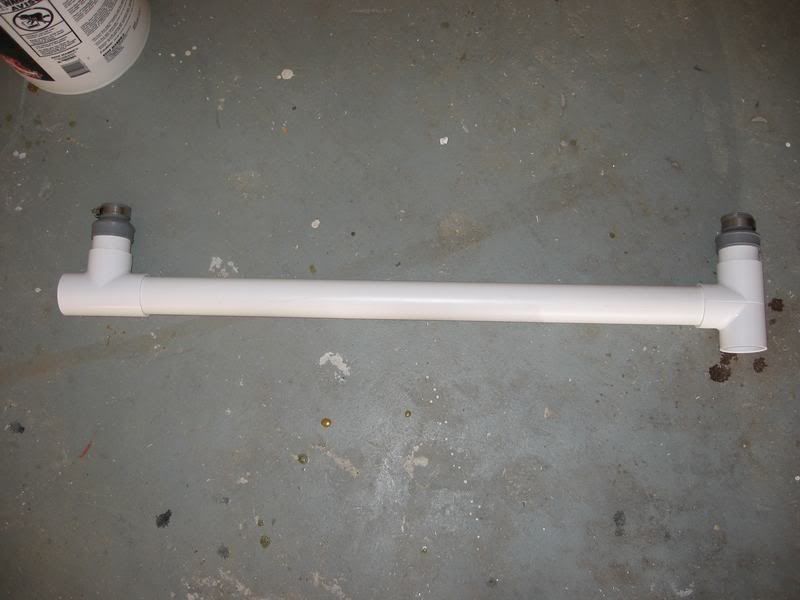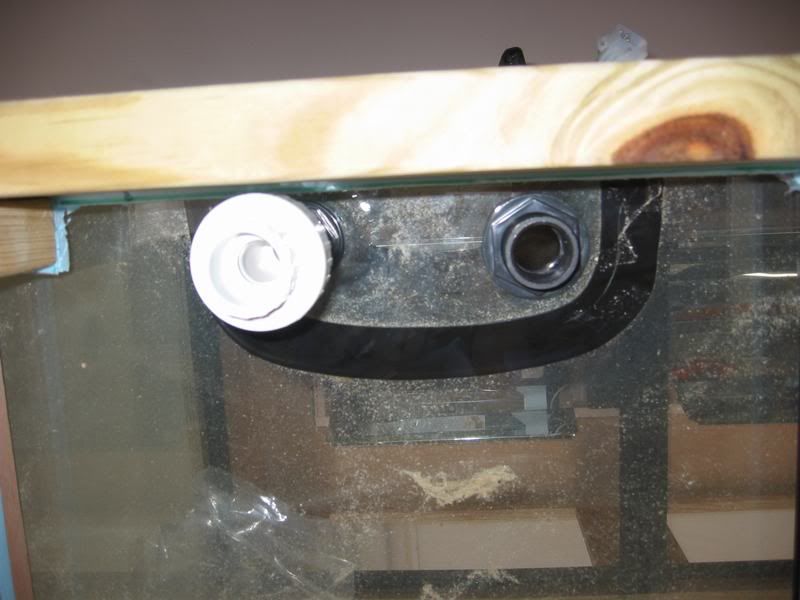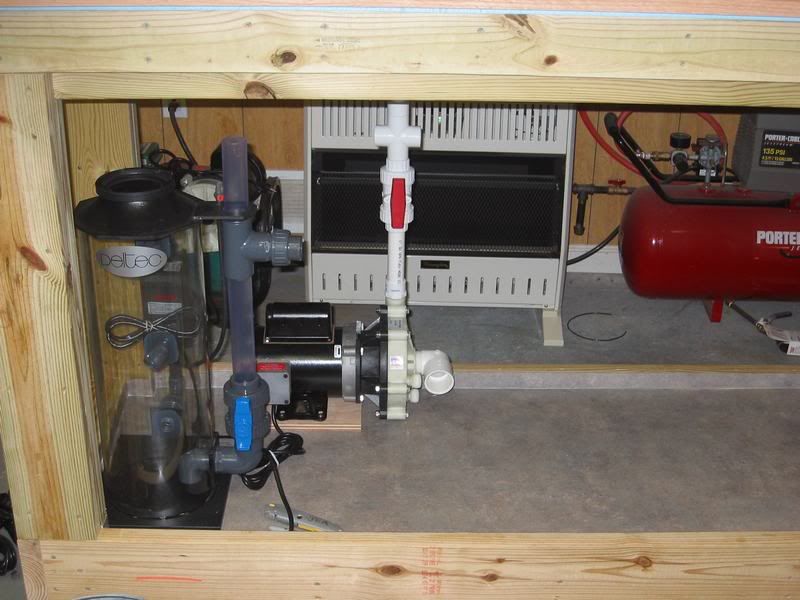Plumbing
To fit the bulkheads to the tank, I wanted extra protection from leaks. On a past tank, a slow leak jammed the union below it up with so much salt that I had to cut the plumbing out with a reciprocating saw. I didn't want that to happen this time.
So what I did was cut some gasket material to fit on the other side of the bulkhead (on the "nut side"), and wrapped the bulkhead threads in teflon tape for an extra good seal.
Note however that this arrangement is not visible in these pictures because the addition of the extra gasket was an afterthought that I didn't document.
When I built the stand, I used doubled up lumber for the tank's support, but I did not do so in the back, instead using a larger piece of wood, so that I'd have room for my pipes and connections.
Unfortunately, it was closer than I thought. What I wanted was absolute maximum flow, the pipes to be as close to the tank as possible, and for the pipes to be easily removable.
For the drains, I couldn't put any elbows on the bottom, threaded or otherwise, because the clearance wasn't sufficient to install them. What I did instead was use these rubber reducing fittings to fit over the outside of the bulkhead.
This allowed me to forego even the small reduction in diameter with the pipe being inserted into the bulkhead. Also, it allowed a flexible connection to the tank, reducing stress on the glass should the plumbing shift or be jarred, and allowing a bit of play in the tank's placement.
While the seals around the outside of the bulkheads probably isn't good enough to prevent leaks should water back up into the pipes, with it being a drain line, the water should only be flowing down and out, so there isn't much risk of a leak. I had to heat the rubber with a blowtorch to enlarge it slightly to accomodate the bulkheads.
In the end, I had the least possible amount of constriction I could get away with, and nice big 2" tubing for a drain, and the whole thing could be easily removed.
Next, I started to concentrate on the returns. Again, I wanted the least constriction possible. This time, I was able to fit a union in directly under the bulkhead and clear the stand.
Just Barley!
The bulkheads are 3/4, with a 3/4" to 1" reducing fitting on the union, and a 3/4" nip-ple connecting them together. From the union back, it's all 1" pipe. Notice the piece of 1" spa-flex on each return. That's again to form a flexible connection to the tank to reduce stress on the glass, and allow a big of play when the tank was placed.
You can see an extra "T" up at the top. That's a loop for a UV unit.
/>I worked my way back to the pump, adding a manifold for powering my various devices.
My Sequence Marlin... getting ready to rock!
You can see the 3 phosban reactors ready to go. Only one is intended for Phosban... the others are for carbon and one "extra" for whatever I might need it for. They are also powered off the main pump, and return back to the sump.
Don't worry, I'll get to the sump that you are no doubt noticing in this picture.


















